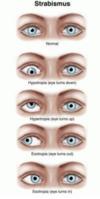PE Midterm Flashcards
(121 cards)
define vertigo
These sensations point primarily to a problem in the ?????
refers to the perception that the patient or the environment is rotating or spinning
- These sensations point primarily to a problem in the labyrinths of the inner ear,
- peripheral lesions of CN VIII, or lesions in its central pathways or nuclei in the brain.
what question should you ask a patient to clarify vertgo
- Ask: “Do you feel as if the room is spinning or tilting?” (vertigo)
what question should to ask pt to clarify lightheadedness
- “Do your symptoms onset/worsen upon sitting up or standing?” (lightheadedness)
distinguist b/w vertigo and desquilibrium
Vertigo is the sensation of true rotational movement of the patient or the surroundings.
- Disequilibrium, on the other hand, has to do with one feeling unsteady or losing their balance.
A helpful special test utilized clinically in the workup to help differentiate between vertigo of a peripheral versus central cause is the _____ ____.
Note: A helpful special test utilized clinically in the workup to help differentiate between vertigo of a peripheral versus central cause is the DixHalpike maneuver
distinguish b/w primary and secodnary headaches
- Primary headaches include migraine, tension, cluster and chronic daily headaches.
- Secondary headaches arise from underlying structural, systemic, or infectious causes such as meningitis or subarachnoid hemorrhage and may be life-threatening.
distinguish b/w unilateral and tension hedaches
- Unilateral headache occurs in migraine and cluster headaches.
- Tension headaches often arise in the temporal areas; cluster headaches may be retro-orbital.
- Difficulty with close work suggests ______ (farsightedness) or presbyopia aging vision),
whereas worsened vision with distances suggests _____ (nearsightedness
hyperobia
myopia
sudden unilateral painless vision loss think:
consider vitreous hemorrhage from D.M.
trauma
retinal detachment
retinal vein occlusion
central retinal artery occlusion
sudden painful vision loss usually associated w/ cornea and anterior chamber think:
corneal ulcer
uveitis
traumatic hyphema
acute glaucoma
Optic neuritis from multiple sclerosis may also be painful.
Slow central loss occurs in
catract
macular degeneration
peripheral vision loss occurs in
advanced open-angle glaucoma
one-sided loss in hemianopsia and quadrantic defects.
moving specks or stands in visual pathway suggest
- Moving specks or strands suggest vitreous floaters; fixed defects, or scotomas, suggest lesions in the retina or visual pathways.
flashing lughts or new vitrous floaters suggest
- Flashing lights or new vitreous floaters suggest detachment of vitreous from the retina. Prompt eye consultation is indicated.
- Diplopia in one eye, with the other closed, suggests a problem in the _____ or ___.
cornea or lens
- Diplopia is seen in lesions in the ____ or ______, or from weakness or paralysis of one or more extraocular muscles, as in _____ diplopia from palsy of cranial nerve (CN) III or VI, or _____ diplopia from palsy of CN III or IV.
brainstem or cerebellum
horizontal
vertical
horizontal diplopia from palsy of cranial nerve
vertical?
horiz III or VI
vertical III or IV
People with sensorineural hearing loss find being in noisy environments make hearing (worse/better) where in conductive hearing loss noisy environments make hearing (worse/better_
seni - worse
conductive - better
Name medications that affect hearing
- aminoglycosides
- aspirin
- NSAIDs
- quinine
- furosemide.
- Pain occurs in the external canal in otitis externa and, if associated with a ____ _____, in the middle ear in otitis media.
respiratory infection
- Ear pain may also be referred from other structures in the ____, ___ or ___.
- Ear pain may also be referred from other structures in the mouth, throat or neck.
when tinnitus is associated with hearing loss and vertigo it suggests:
Meniere’s disease.
most likely cause of acute hoarseness (2)
- If hoarseness is acute, voice overuse and acute viral laryngitis are the most likely causes.
when examining the eye a crescent shadow is noted nasally.
Dx?
narrow-angle glaucoma





